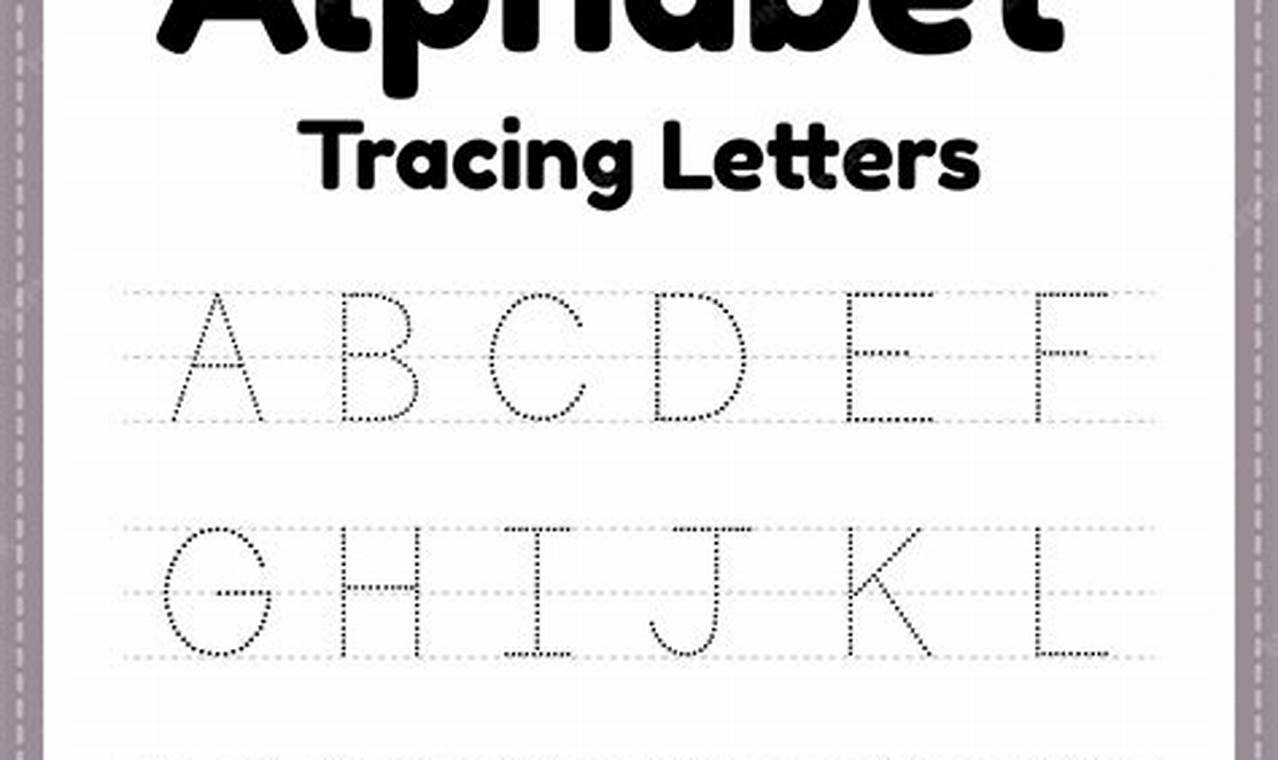Early literacy is a cornerstone of a child’s educational journey, and mastering the alphabet is a crucial first step. The ability to recognize and form letters lays the groundwork for reading and writing proficiency. Alphabet tracing worksheets are an effective and engaging method to introduce young children to the world of letters, fostering essential pre-writing skills that will benefit them throughout their academic careers.
The use of alphabet tracing worksheets offers numerous advantages for young learners. These worksheets improve letter recognition, helping children to visually identify and differentiate between each letter. Tracing also significantly enhances fine motor skills, as children practice controlling a writing tool within defined boundaries. This development of hand-eye coordination is essential for future writing tasks. Furthermore, tracing helps children understand the correct formation of each letter, promoting proper handwriting techniques from an early age.
The “alphabet tracing worksheets for young children” typically include uppercase and lowercase letters of the alphabet. Each letter is presented with a dotted outline that children can trace over, reinforcing the letter’s shape and form. Often, worksheets include directional arrows indicating the correct stroke order for each letter, further supporting proper letter formation. Some worksheets may also incorporate visual cues, such as pictures corresponding to each letter, to make learning more engaging and memorable. Ample space is often provided for independent practice after tracing, allowing children to apply what they have learned.
To maximize the benefits of alphabet tracing worksheets, guide the child through the activity with patience and encouragement. Begin by demonstrating how to hold the pencil or crayon correctly. Encourage the child to follow the dotted lines carefully, starting at the designated point and moving in the indicated direction. If the child struggles, provide gentle guidance and positive reinforcement. Breaking the task into smaller, manageable steps, such as focusing on one letter at a time, can prevent frustration. Consider using thick pencils or crayons, which are easier for small hands to grip and control.
To complement the use of alphabet tracing worksheets, consider incorporating other resources that reinforce letter recognition and formation. Kidtraces.com offers a variety of related worksheets, including alphabet coloring pages and letter matching activities. Educational games and apps that focus on letter sounds and shapes can also enhance learning. Reading aloud to children and engaging in conversations about letters and words further strengthens their literacy skills. Daily activities, such as writing letters in sand or using building blocks to create letter shapes, can provide additional hands-on learning experiences.
Alphabet tracing worksheets are a valuable tool for introducing young children to the alphabet and fostering essential pre-writing skills. By providing a structured and engaging learning experience, these worksheets help children develop letter recognition, fine motor skills, and proper handwriting techniques. Parents and educators are encouraged to download and try these worksheets to support children’s literacy development. Explore more free resources on Kidtraces.com to continue supporting continuous learning and skill development.
